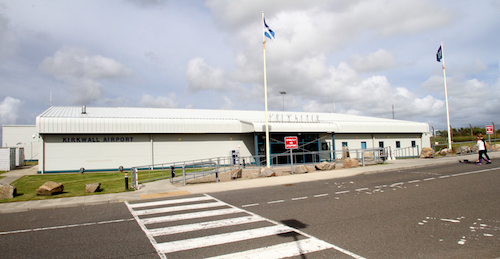HIAL centralisation plans ‘could only proceed with CAA approval’ say Isles representatives

Three Northern Isles politicians have thanked the Civil Aviation Authority (CCA) for their input into discussions surrounding centralisation plans by Highlands and Island Airports Ltd. (HIAL), confirming that the airport operator will have to satisfy CCA safety requirements before it can go ahead with plans to install a remote air traffic control centre.
Yesterday, Northern Isles representatives Liam McArthur MSP, Tavish Scott MSP and Alistair Carmichael MP held talks with the CCA to discuss concerns surrounding plans by Highlands and Islands Airports Limited (HIAL) for the future of air traffic provision in the region.
The talks followed representations they made earlier in the week to HIAL’s Managing Director, Inglis Lyon, concerning the cost and deliverability of the technology proposed in HIAL’s plans to move to remote air traffic control.
In attendance for the Civil Aviation Authority (CAA) was Rob Lewis, manager for air traffic management, and Will Nathan, parliamentary liaison officer.
In a joint statement following the meeting, the Northern Isles representatives said that they were grateful to the CAA for their time and found the discussion extremely helpful.
“The CAA were able to confirm that HIAL’s plans to move to a more centralised system of remote towards across the Highlands & Islands could only proceed with CAA approval. This will only happen if HIAL manage to satisfy the CAA’s safety requirements,” they explained.
“On the basis of the proposals published last week, we remain of the view that HIAL have their work cut out. The board has chosen the most costly and risky option and has some way to go in demonstrating that the resilience of communications needed between local airports and the remote centre can be achieved or achieved cost-effectively.
“Meantime, the risk is that issues HIAL says it has with recruitment and retention of locally based air traffic control staff become more difficult. This is something HIAL must look to address.”

